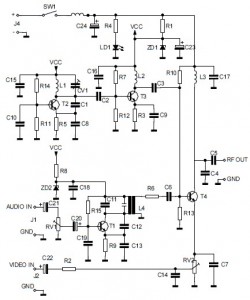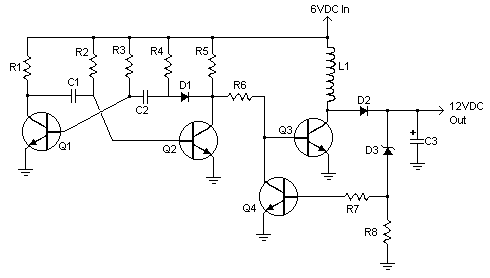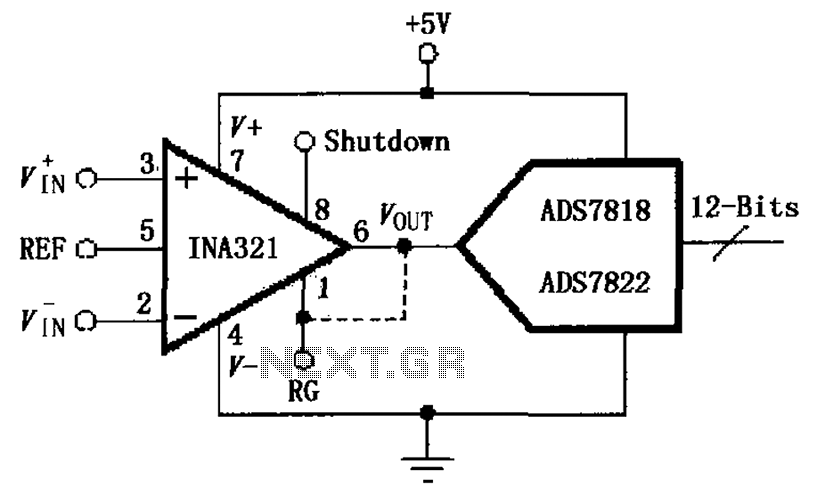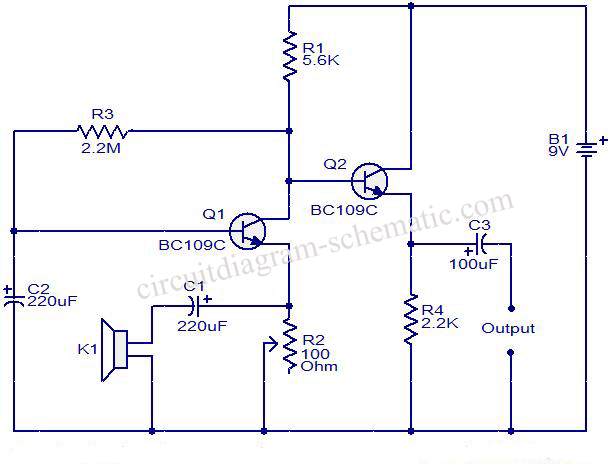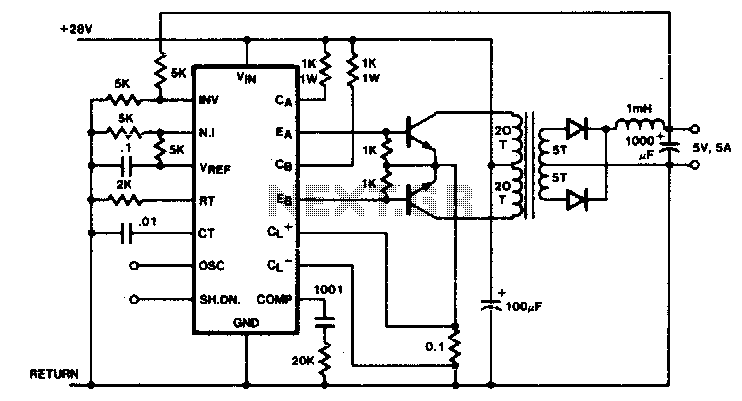
VGA to TV converter II
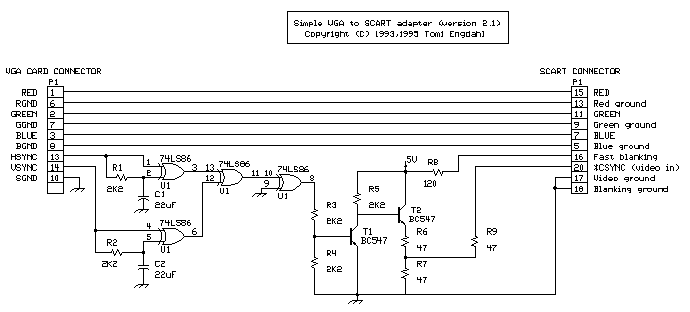
This VGA to TV converter is designed to connect a VGA card to a television that has a suitable 21-pin AV connector for RGB input (called EURO/SCART/Peritel connector). If your TV does not have this kind of connector, then you cannot use this circuit. The method used in the circuit maximizes the picture quality and resolution shown on the TV screen. The advantages of the design are simplicity and superior image resolution compared to many commercial designs. The circuit needs drivers to operate. This is the weakest link in the circuit because there are lots of different PC VGA cards and software.
The VGA to TV converter circuit functions by converting the VGA signal output from a computer into a format suitable for display on a television. The primary component of this circuit is a microcontroller or a dedicated VGA to RGB converter IC, which processes the VGA signal to adapt it for the 21-pin EURO/SCART connector.
The circuit typically includes several key components:
1. **VGA Connector**: This is where the VGA cable from the computer connects. It usually has 15 pins that carry the RGB signals as well as horizontal and vertical sync signals.
2. **Signal Conditioning**: This stage may involve operational amplifiers or filters to ensure the signal integrity is maintained and to adjust the levels of the RGB signals to match the input specifications of the TV.
3. **RGB to Composite Converter**: Since many televisions accept composite video signals, this stage converts the RGB signals into a composite signal if necessary. This can be done using an IC designed for RGB to composite conversion.
4. **21-pin EURO/SCART Connector**: This is the output stage of the circuit where the processed video signal is sent to the TV. This connector carries multiple signals, including RGB, composite video, audio, and control signals.
5. **Power Supply**: The circuit requires a stable power supply, often derived from the USB port of the computer or an external adapter, to power the components effectively.
6. **Drivers**: The circuit relies on specific drivers to communicate with various VGA cards. This is a critical aspect, as compatibility with different VGA cards can vary significantly, which may affect the performance and image quality.
The design emphasizes simplicity, allowing for easier assembly and troubleshooting. By maximizing the picture quality and resolution, it provides a superior alternative to many commercial products. However, users must ensure that their TV is compatible with the EURO/SCART connector and that the appropriate drivers are installed for their VGA card to achieve optimal performance.This VGA to TV converter is designed to connect VGA card to a television which has suitable 21-pin AV connector for RGB input (called EURO/SCART/Peritel connector). if you Tv does not have this kind of connector, then you can`t use this circuit. The method used in the circuit maximizes the picture quality and resolution shown in TV screen. The advantages of the design are simplicity and superior image resolution compared to many commercial designs. The circuit need always drivers to operate. This is the weakest link in the circuit, because there are lots of different PC VGA cards and sof 🔗 External reference
The VGA to TV converter circuit functions by converting the VGA signal output from a computer into a format suitable for display on a television. The primary component of this circuit is a microcontroller or a dedicated VGA to RGB converter IC, which processes the VGA signal to adapt it for the 21-pin EURO/SCART connector.
The circuit typically includes several key components:
1. **VGA Connector**: This is where the VGA cable from the computer connects. It usually has 15 pins that carry the RGB signals as well as horizontal and vertical sync signals.
2. **Signal Conditioning**: This stage may involve operational amplifiers or filters to ensure the signal integrity is maintained and to adjust the levels of the RGB signals to match the input specifications of the TV.
3. **RGB to Composite Converter**: Since many televisions accept composite video signals, this stage converts the RGB signals into a composite signal if necessary. This can be done using an IC designed for RGB to composite conversion.
4. **21-pin EURO/SCART Connector**: This is the output stage of the circuit where the processed video signal is sent to the TV. This connector carries multiple signals, including RGB, composite video, audio, and control signals.
5. **Power Supply**: The circuit requires a stable power supply, often derived from the USB port of the computer or an external adapter, to power the components effectively.
6. **Drivers**: The circuit relies on specific drivers to communicate with various VGA cards. This is a critical aspect, as compatibility with different VGA cards can vary significantly, which may affect the performance and image quality.
The design emphasizes simplicity, allowing for easier assembly and troubleshooting. By maximizing the picture quality and resolution, it provides a superior alternative to many commercial products. However, users must ensure that their TV is compatible with the EURO/SCART connector and that the appropriate drivers are installed for their VGA card to achieve optimal performance.This VGA to TV converter is designed to connect VGA card to a television which has suitable 21-pin AV connector for RGB input (called EURO/SCART/Peritel connector). if you Tv does not have this kind of connector, then you can`t use this circuit. The method used in the circuit maximizes the picture quality and resolution shown in TV screen. The advantages of the design are simplicity and superior image resolution compared to many commercial designs. The circuit need always drivers to operate. This is the weakest link in the circuit, because there are lots of different PC VGA cards and sof 🔗 External reference
